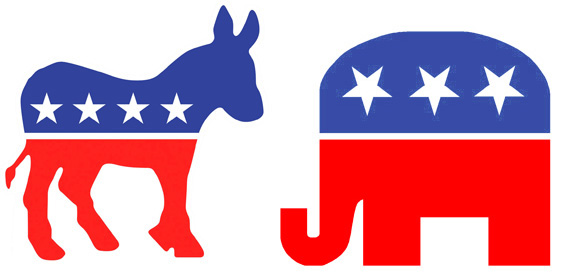Kyle Cave
Staff Writer
In political history, there has always been a party divide. However, in this current Trump Administration and beyond, we are likely to see this divide between Democrat and Republican play out not just individually, but statewide, too.
On Jul. 4, 2025, Donald Trump’s “One Big Beautiful Bill” was signed into law. This bill has some of the biggest spending cuts in American history. Some of the biggest cuts come with Medicaid.
The Congressional Budget Office predicts that $1 trillion in spending will be slashed from Medicaid over a 10-year period. This has the potential to leave 10 million Americans uninsured by 2034.
Everyone around the country will feel the effects of this bill. But rural areas will feel the effects of the bill the most. Take the case of Louisiana. According to the KFF (Kaiser Family Foundation), 35% of people under 65 in Louisiana were covered by Medicaid in 2023. This is the second-highest among the 50 states.
The Big Beautiful Bill doesn’t only cut Medicaid, it cuts SNAP benefits. SNAP (Supplemental Nutrition Assistance Program) is a food assistance program that helps feed Americans in need.
According to NASDAQ, Louisiana has the highest poverty rate in the nation at 18.9%. SNAP benefits being cut would be devastating for the state, as 41% of people in Louisiana are at or below the 50% poverty line.

When it comes to literacy rates, red states tend to have the lowest in the nation. It is important to note that when it comes to education, red states have seen gains in the past few years, but are still at a disadvantage with some of the lowest literacy rates, including Louisiana, Mississippi and Texas.
The states with the highest literacy rates are New Hampshire, Rhode Island and Massachusetts, all of these being blue states.
Vaccination rates nationwide have seen a sharp decline, particularly in childhood vaccination rates. The states with the lowest childhood vaccination rates are Idaho, West Virginia, Alaska, Florida and Georgia. These states are also red. The state with the highest Measles outbreak in 2025 has been the state of Texas, also a red state.
The states with the highest childhood vaccination rates are Massachusetts, Connecticut, New Hampshire, Rhode Island, Vermont, North Dakota and New York, all blue states, except North Dakota.
Upon examining all the data, one answer can be taken from this, and that is America is extremely divided.
People ask where we can go from here and how we can solve this astronomical divide between states. The answer isn’t exactly easy.
The answer to most of these is to continue funding education, provide more access to healthcare around the nation, and provide more funding for social programs. The main hurdle as to why these will most likely not happen is misinformation.
A lot of Americans believe that vaccines harm you, SNAP benefits are “handouts,” and for years, we have seen the rise of anti-intellectualism across the nation. Of course, at this moment, the biggest hurdle to all these policies is the current administration, but we got here because of a multitude of factors that predate the current administration.
Policy changes are the logical next step to solving these problems we have. However, if we fail to address how we got to this point in the country, especially with education and anti-intellectualism, we are doomed to repeat the same thing.
If you give people a policy that will benefit them, even if it helps them, you can find yourself in a situation where the people reject your policy because of misinformation.
People will disagree with policy no matter what, but due to social media and the amount of misinformation spread on platforms that most of the time go unchecked, people will believe misconceptions, manipulated numbers and misleading information.
The red and blue state divide goes beyond social media, but the policies that are set to affect the country in the coming years and months will clearly worsen the current divide we are seeing between blue and red states.
This debate also transcends federal policy. It goes to the individual and state politics as well. Red states and blue states prioritize certain agendas for their states.
If red state governors and individuals in the states want policies that, on paper, will show a negative outcome for those in their state, other states can use that policy as a future idea of what to implement and what not to implement.
With how divided the political environment is currently, it may be almost impossible to convince one side to compromise on policy. The only way forward at this moment may be seeing how policies affect states and basing future policy on what states are performing the best.
The future of the country is extremely uncertain right now. There will not be a magical moment that brings the country together. It may take an entire generation to come back to compromise. As of right now, observing and looking at the states doing better or worse is the way for the foreseeable future.

